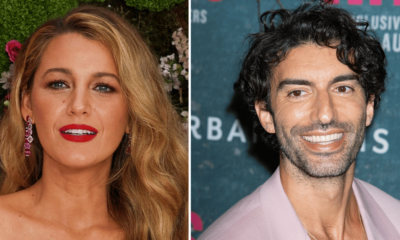Entertainment
Justin Simien’s daring take on film history

Diversity in Hollywood consists of cycles of boom and bust. There are moments of abundance when black people are especially visible on the big and small screens, with the Blaxploitation era in the 1970s and the reign of black authors in the 1990s being prime examples of this. However, once Black creators and actors find their feet, the industry no longer sees them as valuable and they disappear once again. In his new four-part MGM+ series, “Hollywood Black,” based on the book by historian Donald Bogle, director Justin Simien argues that cinema as a medium is not possible without Blackness. The series takes audiences through film history with anecdotes from industry icons including Ryan Coogler, Ava DuVernay and Charles Burnett, and re-examines film history through the lens of the people who helped shape and sometimes save the company – but who often do. given the short end of the stick.
To rethink how film history is explored, the first episode of the series, titled “Built on Our Backs,” begins at the birth of the moving image. During the silent era and in the talkies, Blackness was showcased in minstrel acts, in blackface, or under restrictive stereotypical images presented by actors such as Bert Williams, Stepin Fetchit, and Hattie McDaniel. But rather than crucifying the artists for their involvement in these often hurtful performances, Simien analyzes their brilliant artistic expression and explains how these earlier acts paved the way for stars like Lena Horne and Richard Pryor. As he suggests, working under such oppressive conditions was no small feat.
Although ‘Hollywood Black’ is mainly told linearly, personal stories of people in and around the industry draw a beautiful line through the decades. Through this structured timeline, viewers can see how the rise of megastars like Sidney Poitier, Eddie Murphy and Denzel Washington are connected. Aligning their careers with American history illustrates the impact that black liberation and the civil rights movement had on all sectors of society.
Some viewers are probably aware of important moments in film history. For example, the rise of Spike Lee gave rise to the birth of the modern black writer-director. Additionally, the controversy surrounding 1985’s “The Color Purple,” directed by Steven Spielberg, caused a frenzy and led to a boycott due to the film’s black male representation. Still, lesser-known facts emerge in the docuseries, setting it apart from similar historical shows. The third episode, “The Price of Admission,” explores the rise of black female directors like Julie Dash, Cheryl Dunye and Kasi Lemmons. It also focuses on the impact of ‘Waiting to Exhale’. Based on the critically acclaimed book by Terry McMillan and the directorial debut of Forest Whitaker, the film spoke to the vastly underrepresented audience of Black female moviegoers. The film’s original soundtrack, produced by Babyface, was just as popular and still is.
More than a history lesson, “Hollywood Black” attempts to ask some fundamental questions about the sustainability of black storytelling in an increasingly volatile industry. It is especially poignant at a time when racism has come to the surface, emboldening those who may have previously been silenced. Furthermore, because the black experience is not a monolith, Simien explores the turning points within the community while examining the politics of respectability that emerged in different time periods. The production of hood films such as ‘Boyz N the Hood’ and ‘Menace II Society’ in the 1990s, while important, offered a special and very masculine view of Blackness, which caused much resistance and concern among black middle and upper middle class. classes. There is little mention of queer representation in black stories, with directors like the late Marlon Riggs creating films like “Tongues Untied” to combat rampant homophobia. Even today, debates over stereotypical characterizations continue to plague the work of prolific filmmaker Tyler Perry, who has been specifically called out for the negative depictions of black women in his films.
“Hollywood Black” doesn’t claim to know all the answers, but instead asks viewers to change their perspective. It suggests that we need to move beyond the calls for representation, which have often presented simplistic examples of the black experience in films like “The Blind Side” and “The Help.” Instead, Hollywood should be tasked with leveling the playing field while championing projects that truly understand Black characters and show deep care for them. Moving and reflective, the series reminds audiences that black films are deeply connected to the American story and belong to the common fabric of the cinema landscape.
“Hollywood Black” premieres August 11 on MGM+, with new episodes airing weekly on Sundays.













